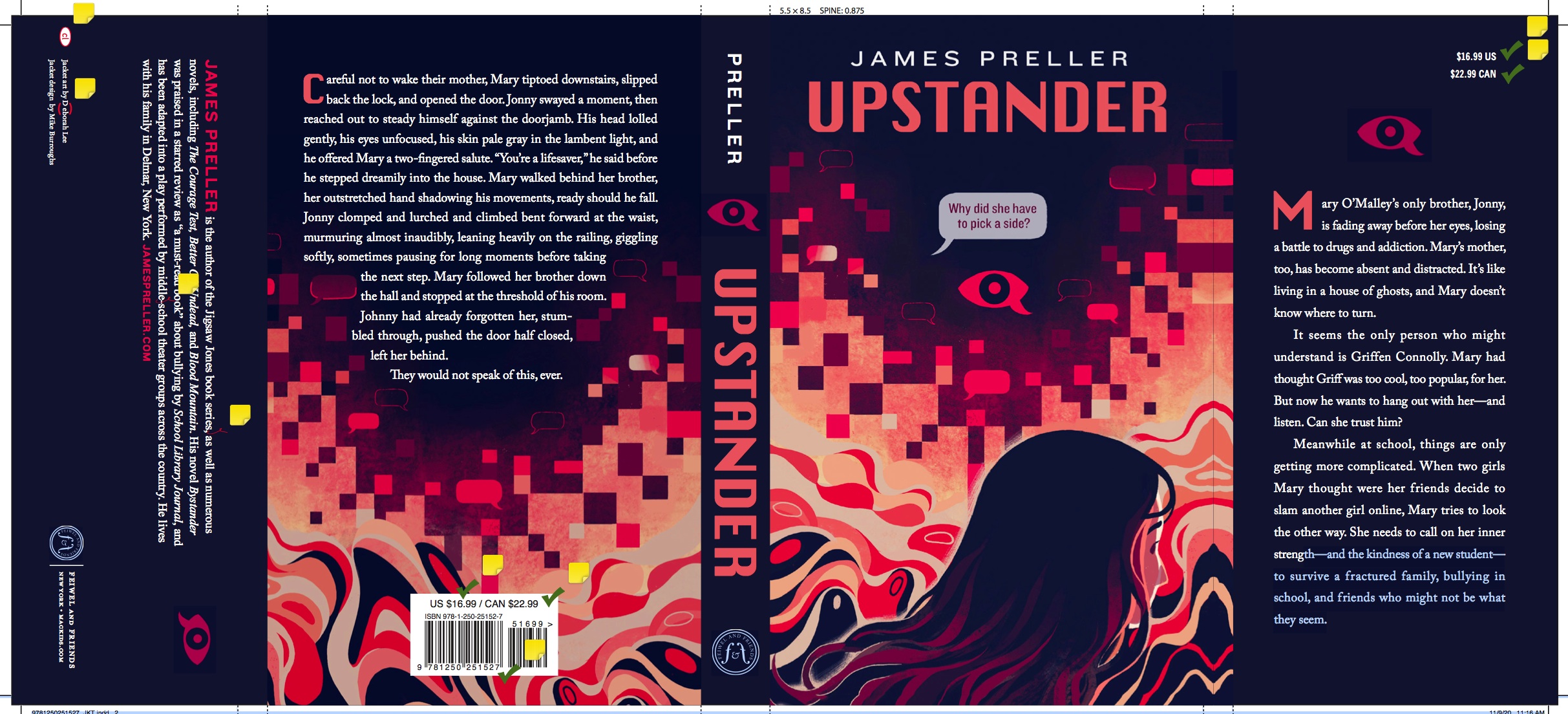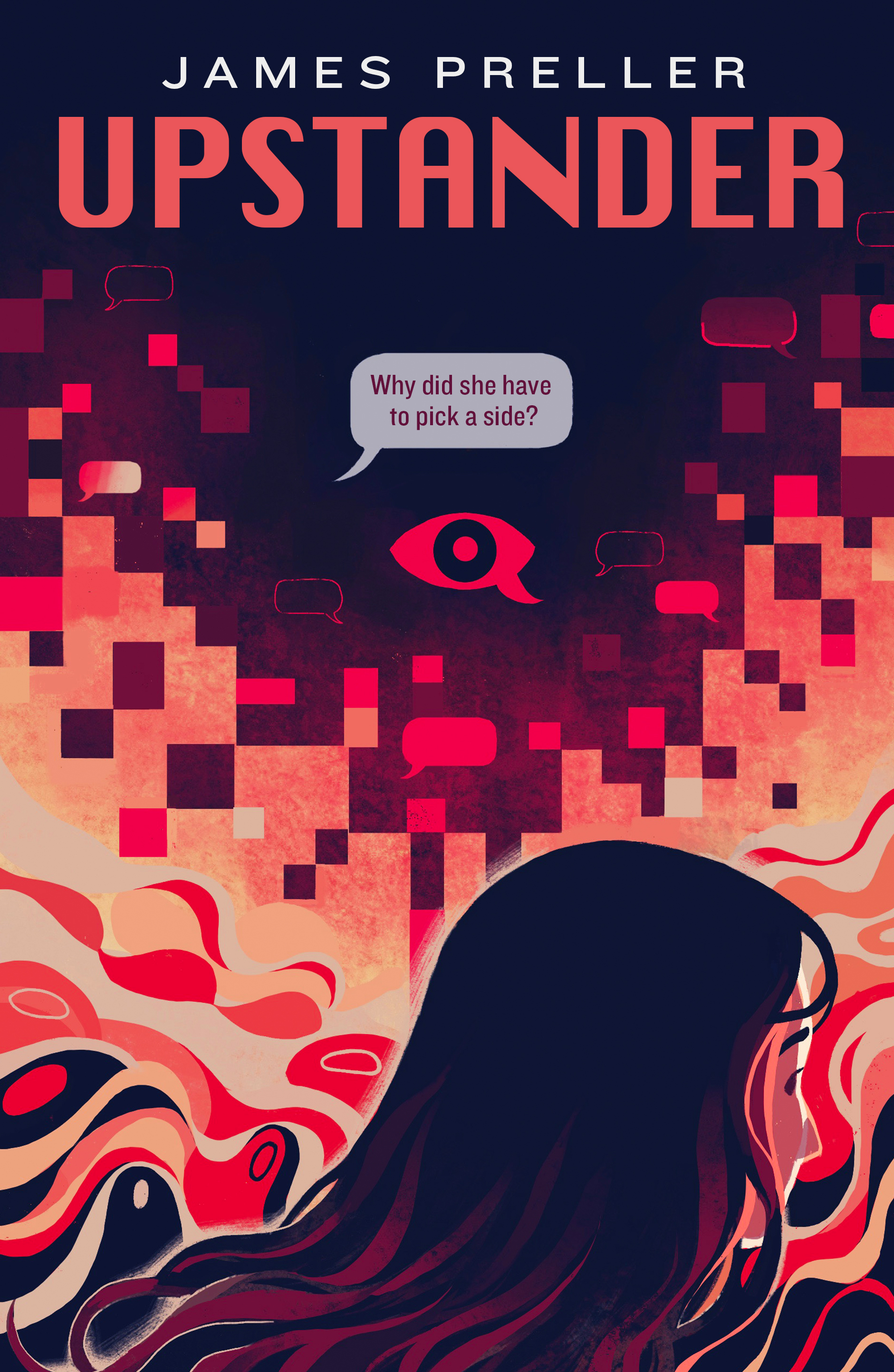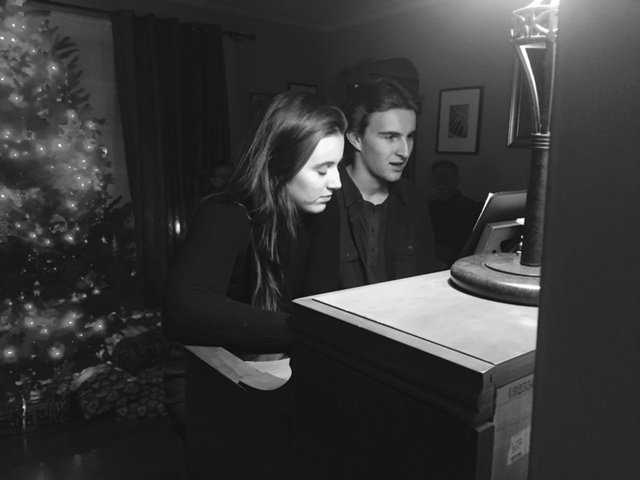–
Today’s a special day here at James Preller Dot Com. Over my career in children’s publishing, which began more than 35 years ago (gulp), I’ve interviewed more than a hundred children’s book writers and illustrators — many of whom were legends. My first interview came as a junior copywriter at Scholastic when I nervously sent out a carrier pigeon to author Ann McGovern (Shark Lady). I’ve since enjoyed long telephone interviews with the likes of Barbara Cooney, James Marshall, Ashley Bryan, Faith Ringgold, Karla Kushkin, Bernard Waber, Vera B. Williams, and many more. These days I post interviews on ye olde blog, including lengthy ones with James Bird, Lesa Cline-Ransome, Matthew Cordell, Ralph Fletcher, Jordan Sonnenblick, Wendell Minor, Deb Pilutti — so many. In addition, I’ve hosted contributions from Lois Lowry, Nick Bruel, Eugene Yelchin, Joseph Bruchac, Karen Hesse, Linda Sue Park, and on and on.
You’d think maybe I’d learn a thing or two along the way.
But nope, you’d be wrong!
Not a thing.
But then it hit me. The one person I’ve never interviewed, the one person who truly gets me . . . who completes me . . .
I decided to interview myself.
Look! Here I come now!
James, thanks for stopping by.
You can call me Jimmy.
Same!
Or Jimbo.
Same!
That’s great. This is going really swell. When do the questions start?
Right about now. It’s been 10 years since you wrote Bystander. Many readers have asked about a sequel. But you always said no. What changed your mind?
First of all, that’s an awesome question.
Thank you.
I finally figured out that it wasn’t a longer story — it was a larger story. It wasn’t what happened next, after Bystander ended, it was simply a bigger canvas, stretched up, down, and sideways.
Genius!
I know!
But this time around, the focus is on Mary.
There were a couple of reasons for that. First of all, I always said that Mary was a minor but crucial character in Bystander. She was the character who changed the most. But also, I think, Mary’s character was a little underwritten. I had made the decision to follow Eric, and really hone in tight there. I felt there wasn’t time, in terms of pacing, to explore Mary’s world. So she was kind of left on the sidelines. This new book gave me a second chance to tell her story.
The timetable for Upstander begins about six weeks before Bystander.
Yes. Working that out was a challenge. I took events that occurred in the previous book, pulled out a calendar, and worked backwards to figure out the dates. In my unedited manuscript, I wrote in the dates to help keep the narrative straight in my mind. We took that out for the final version.
It turns out that Mary has a lot going on in her home life.
She really does. And don’t you think that’s true for all us? We have these bright, shiny surfaces that people see — classmates, friends, neighbors — but beneath that, we don’t really know what’s going on with anybody. I mean, with Bystander, right in the beginning, we see Mary hanging out with Griffin and getting involved in a pretty awful situation.
Ketchup, yes, love that chapter.
Thanks.
No, you’re awesome. Seriously. I’m a big fan.
Thanks again.
No, really. I don’t know if you hear that enough, James. I feel like deep down inside you’re just a wounded bird . . . or a very sad baby seal . . . or . . .
Anyway — um, don’t grovel, Jimbo, it makes me uncomfortable — I felt that with this book I could explore that relationship. Why was Mary with those guys? That’s the prequel aspect, where we get to see Mary’s home and social life up close, including how and why she got involved with Griffin.
And about halfway through the book, you catch up with the Bystander timeline.
Yes, it was so much fun. I knew I didn’t want to just retell the events of Bystander from a different point of view. I wanted to cover new ground, painting on that bigger canvas. But at the same time, there were a couple of scenes that I had to revisit, which I think attentive readers of both books will really enjoy looking at and picking apart.
Bystander begins with Eric already covered in ketchup. In Upstander, you wrote the scene where it happened.
I know. The cruelty of that scene was unpleasant to write. Not fun, but I felt it had to be done.
Mary’s older brother, Jonny, has a substance use disorder.
Yes.
Why did you go there?
Substance abuse is a pervasive illness in our world, but it’s also a hidden disease, all too often associated with stigma and shame. We don’t like to talk about it. But people are sick and suffering and dying. I felt that with this topic, I had some things I wanted to say. I wanted to humanize the victims and also show how their experience affected the entire family.
–
–
We see it through Mary’s eyes.
Exactly. Mary doesn’t fully understand everything that her brother is going through. But she feels it, and she sees what’s happening in their home. Here’s the thing: I grew up as the youngest of seven children. Five of them were more than 7 years older than me — they might as well have lived on different planets. So I was very aware of watching these older brothers and sisters living mysterious lives that I could barely comprehend. I’d be six and watch my sister wearing lipstick run off in a car with her boyfriend. Or, disturbingly, see a brother get into a physical altercation with my father. Or hear loud music bleeding through the walls. So I guess that’s a familiar perspective for me, observing the complicated, confusing lives of my older siblings.
How did you research the topic?
I read a lot of incredible books, told from various perspectives. I also hooked up with a man, Young Do, who runs a treatment center in downtown Albany. We talked, had lunch, I visited the center, and Young read the finished manuscript. I was lucky to meet up with him. In fact, a personal experience that Young told me about — how he used to get locked out of his house, needing to wake his brother to let him in — inspired the opening scene of Upstander.
So if anything in the book is wrong, can we blame him?
Yeah, totally.
–
We learn a lot more about Chantel in this book.
Yes, I felt that was important. Readers needed to know more about that story and Mary’s part in the cyberbullying. I was glad to get to know Chantel better, spend time in her kitchen, meet her family, describe her tennis game.
Is that how it works for you? You put two characters together, they start talking, and the scene writes itself.
Ha! Not quite. I do all the work. But I will say that it was a blast to revisit old characters. Hakeem plays a larger role in this book. Eric, of course. And then there’s the school resource officer, Mr. Goldsworthy. He played a small role in Bystander, but I think we get a richer picture of him in this book. I’m proud there’s a positive portrayal of a compassionate police officer in this book. Just putting that out in the world feels right.
For all his flaws, Griffin becomes something of a sympathetic character by the end of Upstander.
I hope so. He’s got a lot going on in his life, too. You know, I hate putting labels on people, stuffing them into little boxes. Griffin as “the bully.” Because that’s not how the world works. Bullying is a verb, not a noun. It’s a behavior, not a person. Griffin Connelly is a lot of things — Whitman’s “I am large, I contain multitudes” — so I really wanted to show his range and, again, his humanity. I didn’t want him to be reduced to the role of big, dumb, slobbering bully. Life is far more complicated than that. At the same time, he’s responsible for his own actions and he did some very uncool things.
 Well, it looks like we’re out of time.
Well, it looks like we’re out of time.
Yeah, I’ve got a thing.
Me, too.
But thanks for having me over. No one ever asks to interview me.
Yes, I know, sad.
But this has been enjoyable, talking about the book. You asked great questions. Super insightful.
Really?
Oh, yeah. You were incredible.
Aw, I thought you were incredible. Can we hug?
Gee, you know, I’m still waiting on that second vaccine shot to kick in. You understand.
Sure, pal.
Let’s just say that we’re both wonderful and leave it at that!
 UPSTANDER is available now for presale where all books are sold. Educators may be able to acquire advance, unedited PDF files, for free, via NetGalley. Not exactly sure how that works. I truly appreciate your support. The book officially publishes May 11th. While it is a story that stands alone — you don’t need to read Bystander to enjoy it — I’m hoping that fans of Bystander will get a huge kick out of it.
UPSTANDER is available now for presale where all books are sold. Educators may be able to acquire advance, unedited PDF files, for free, via NetGalley. Not exactly sure how that works. I truly appreciate your support. The book officially publishes May 11th. While it is a story that stands alone — you don’t need to read Bystander to enjoy it — I’m hoping that fans of Bystander will get a huge kick out of it.
–
Both books were listed as Junior Library Guild Selections.






 –
–







